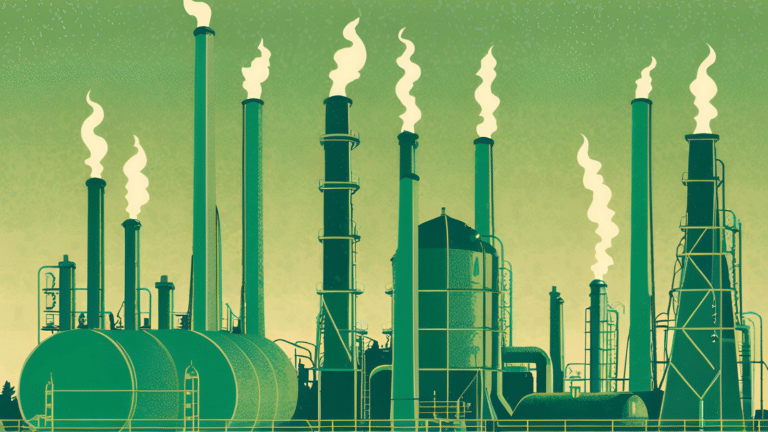This report represents the research and views of the author. It does not necessarily represent the views of the Center on Global Energy Policy. The piece may be subject to further revision. Contributions to SIPA for the benefit of CGEP are general use gifts, which gives the Center discretion in how it allocates these funds. More information is available at Our Partners. Rare cases of sponsored projects are clearly indicated. For a full list of financial supporters of the Center on Global Energy Policy at Columbia University SIPA, please visit our website at Our Partners. See below a list of members that are currently in CGEP’s Visionary Annual Circle.
-
CGEP’s Visionary Annual Circle
-
(This list is updated periodically)
Air Products
Anonymous
Jay Bernstein
Breakthrough Energy LLC
Children’s Investment Fund Foundation (CIFF)
Executive Summary
On September 22, 2020, China’s leader, Xi Jinping, made a surprise announcement about China’s climate ambitions during remarks to the United Nations General Assembly. He stated that China, the world’s largest emitter of greenhouse gases (GHGs), aims to achieve carbon neutrality before 2060. Xi also said that China’s GHG emissions would peak before 2030, a slight revision to China’s pledge under the Paris Climate Agreement to peak emissions around 2030.
China’s new climate targets spurred the country’s three major national oil companies (NOCs)—China National Petroleum Corporation (CNPC), China Petrochemical Corporation (Sinopec Group), and China National Offshore Oil Corporation (CNOOC)—to strengthen their climate ambitions. PetroChina (the flagship subsidiary of CNPC), which had already set a goal of achieving near-zero emissions by 2050, intends to peak its carbon emissions by 2025. Sinopec Corp. (the flagship subsidiary of Sinopec Group) also aims to peak its carbon emissions by 2025 and to achieve carbon neutrality by 2050. CNOOC Ltd. (the flagship subsidiary of CNOOC) plans to reduce its GHG emissions by 16 percent between 2020 and 2025 and aims to peak its carbon emissions before 2030 and achieve carbon neutrality before 2060.
This report, part of the China Energy and Climate Program at Columbia University’s Center on Global Energy Policy, provides a baseline for understanding how China’s NOCs are responding to climate change. It examines the activities the three companies identified as part of their emerging energy transition strategies before Xi unveiled the carbon peaking and carbon neutrality targets, and why they didn’t do more. The report then assesses the implications of China’s new climate ambitions for its NOCs and lays out their preparations to date for supporting Xi’s 2030 and 2060 pledges.
The main findings include the following:
- China’s NOCs are balancing support for Beijing’s decarbonization agenda with its energy security agenda. Ensuring oil and natural gas supplies for China, which imports more than 70 percent of its crude oil and more than 40 percent of its natural gas, is job number one for the NOCs. However, the companies must also demonstrate that they are developing credible plans to support China’s carbon peaking and carbon neutrality goals.
- China’s NOCs are shifting from “oil and gas” to “gas and oil” companies. Beijing’s new climate targets are reinforcing a shift that was already underway in the companies’ domestic production mixes from oil to natural gas. This change is driven by geology (production at China’s largest and oldest oil fields is in decline) and policy (Beijing’s push to increase natural gas use to improve air quality). China’s new climate goals provide its NOCs with another reason to increase natural gas exploration and production. Natural gas can reduce China’s GHG emissions if it substitutes for coal and methane emissions are managed.
- China’s NOCs are looking beyond oil and natural gas. Although these fossil fuels will remain the NOCs’ core business for at least the next decade, the companies recognize that they may have to expand the scope of their operations to adapt to a decarbonizing world. The NOCs are investing in low-carbon energy and technologies where they have comparative advantages:
- CNOOC Ltd. is capitalizing on its decades of experience with offshore engineering to invest in China’s fast-growing offshore wind industry.
- Sinopec Group seeks to leverage its network of more than 30,000 retail stations to become a leading supplier of hydrogen fuel across China.
- CNPC’s plans are less clear, but the company signaled its intent to increase its participation in the energy transition when it merged its oil and natural gas and new energy divisions in April 2021.
While preparations specific to China’s new peaking and neutrality goals are still in the early stages and China’s NOCs are unlikely to reinvent themselves anytime soon, the NOCs are aware that they will need to continue to flesh out their plans for a smooth energy transition to show support for China’s climate ambitions.





